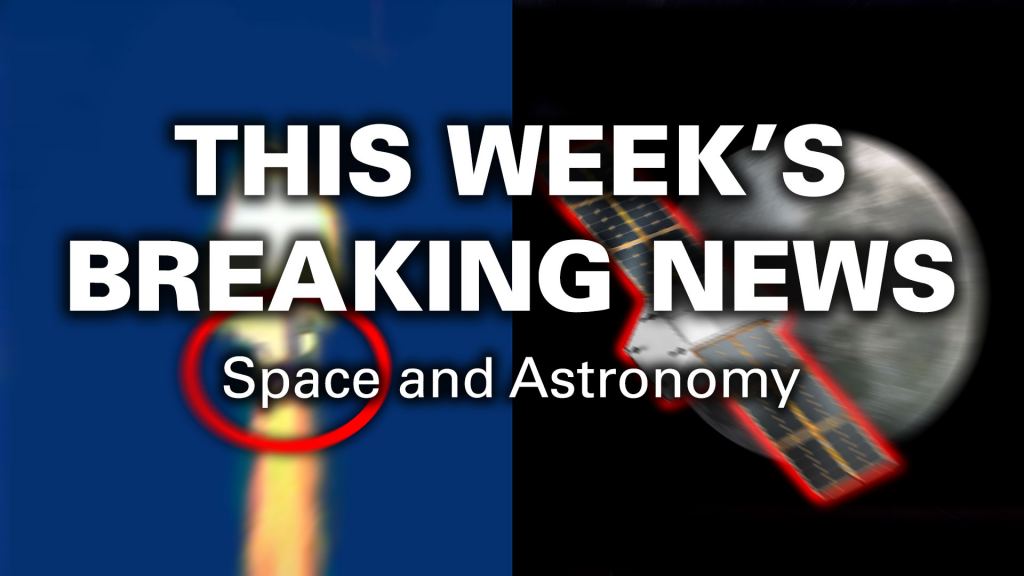Uh oh, NASA’s CAPSTONE mission is having problems, A New Shepard Flight fails, Betelgeuse was recently yellow, and of course, another amazing new image from Webb. For those who can’t wait for the tasty space bites, as always we have a video version for you. All the space news that you need in one place.
CAPSTONE Missions Has More Problems NASA CAPSTONE mission experienced problems during a course correction manoeuvre. The spacecraft began tumbling and lost control of its orientation. At some point, it even consumed more energy than was able to get from its solar panels.
NASA was able to put CAPSTONE into safe mode. Now the mission is energy positive and the team is looking into options to solve the tumbling problem. More about CAPSTONE.
Blue Origin Had an Anomaly in Flight Blue Origin’s New Shepard flight NS-23 ended up unexpectedly. It suffered an in-flight anomaly with the booster. Just around Max Q point, there were visible changes to the exhaust.
After that, the escape system on the capsule started and carried it away from the booster. The flight was uncrewed, so nobody was injured. But it is interesting how the incident will affect the space tourist business of Blue Origin.
More about the New Shepard explosion. Betelgeuse Was Yellow, Not Red, Just 2000 Years Ago We know that Betelgeuse is a rather special star. Back in 2019, it dimmed and many expected it to go supernova.
But it didn’t. So, to understand the star better, astronomers started looking not at the sky, but rather into the past. They found mentions of Betelgeuse in historical documents dating back to 2000 years ago.
And it appears that the star was first seen as yellow and transformed to red throughout recorded history. Which gives a strong hint about Betelgeuse’s age and evolution. More about Betelgeuse changing colour.
Raining Space Diamonds. But In A Lab Planetary scientists believe the conditions are so extreme inside Uranus and Neptune that it rains diamonds. The intense temperature and pressure glue carbon atoms together into diamonds.
These get heavy and fall into the planet’s interiors, where the increasing temperatures melt them into particles again and rise closer to the surface. Now scientists have recreated the conditions inside these planets in the laboratory, generating diamonds for a fraction of a second. More about diamond rain.
Solar Orbiter Hit By a Coronal Mass Ejection Astronomers were fortunate to watch as an enormous coronal mass ejection from the Sun struck the European Space Agency’s Solar Orbiter spacecraft. The storm passed Venus just as the spacecraft used the planet for a gravitational assist maneuver. Unfortunately, some of its instruments were turned off during the flyby, but it did have some operational that could measure the stream of particles as they passed the spacecraft.
Don’t worry, the spacecraft was fine; it was built to operate in this environment. More about Solar Orbiter. Wow! Super-Detailed Images of the Sun This week we have an amazing image of the Sun by the Daniel K.
Inouye solar telescope in Haleakala in Maui. It’s showing the chromosphere, the lower region of its atmosphere where temperatures can reach 7,200 C. It’s extremely detailed and you can even see the Earth for scale.
It just reminds us about how insignificant we are. Even on a scale of just our Solar System. More about insane Sun pictures.
Traditional Webb Treat for Desert If you’ve spent time looking through a telescope, you’re familiar with the Orion Nebula. It’ll be one of the first astrophotography pictures you take. This enormous star-forming complex is right next door, astronomically speaking, filled with thousands of newly forming stars.
Every space telescope and ground observatory has captured photons from the Orion Nebula, and now it’s Webb’s turn. Of course, the mighty James Webb Space Telescope didn’t disappoint with its interpretation of the Orion Nebula, revealing previously hidden stars shrouded in clouds of gas and dust and seeing through thick nebulosity to show its subtle features. More about the Orion Nebula by JWST.
Stay On Top Of More Space News If you want to get a curated selection of the most important space and astronomy news every week, subscribe to our Weekly Email Newsletter and get magazine-size ad-free news directly from Fraser Cain. If you prefer the news to be videoed at you, check out our Space Bites playlist on our YouTube channel. The post Blue Origin Explosion, CAPSTONE Problems, Space Diamonds appeared first on Universe Today.
.
From: universetoday
URL: https://www.universetoday.com/157642/blue-origin-explosion-capstone-problems-space-diamonds/



